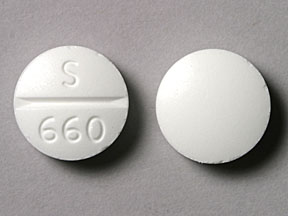Pyrazinamide Disease Interactions
There are 6 disease interactions with pyrazinamide.
PZA (applies to pyrazinamide) gout
Major Potential Hazard, High plausibility.
The use of pyrazinamide is contraindicated in patients with acute gout. Pyrazinamide inhibits the renal excretion of uric acid, which may frequently result in precipitation or exacerbation of gout. Therapy with pyrazinamide should be administered cautiously in patients with hyperuricemia or a history of gout. Serum uric acid levels should be monitored regularly, and appropriate measures (e.g., administration of uricosuric agents) taken to prevent the development of gout. If gouty arthritis occurs, pyrazinamide should be discontinued.
References
- Amodio MI, Bengualid V, Lowy FD (1990) "Development of acute gout secondary to pyrazinamide in a patient without a prior history of gout." DICP, 24, p. 1115-6
- (2001) "Product Information. Pyrazinamide (pyrazinamide)." VersaPharm Inc
PZA (applies to pyrazinamide) hepatotoxicity
Major Potential Hazard, High plausibility. Applicable conditions: Alcoholism, Liver Disease
The use of pyrazinamide is contraindicated in patients with severe liver damage. Pyrazinamide may cause hepatocellular injury, particularly in patients with underlying liver disease and during coadministration with other hepatotoxic agents including other antituberculous drugs such as isoniazid and rifampin. Therapy with pyrazinamide should be administered cautiously and under strict medical supervision in patients with liver disease or a history of alcoholism. Serum transaminases (ALT, AST) and bilirubin should be measured at baseline and monitored closely during therapy. Patients should be instructed to discontinue the drug promptly and seek medical attention if signs and symptoms of hepatic injury develop, including fever, rash, anorexia, nausea, vomiting, fatigue, right upper quadrant pain, dark urine, and jaundice. To lessen the risk of hepatotoxicity, the maximum dosage should not exceed 2 g/day when treatment is administered daily or 3 g/day when administered twice weekly.
References
- Danan G, Pessayre D, Larrey D, Benhamou JP (1981) "Pyrazinamide fulminant hepatitis: an old hepatotoxin strikes again." Lancet, 2, p. 1056-7
- Cohen CD, Sayed AR, Kirsch RE (1983) "Hepatic complications of antituberculosis therapy revisited." S Afr Med J, 63, p. 960-3
- (2001) "Product Information. Pyrazinamide (pyrazinamide)." VersaPharm Inc
- Bennett JE, Mandell GL, Dolin R, eds.. (1995) "Mandell, Douglas and Bennett's Principles and Practice of Infectious Diseases." New York, NY: Churchill Livingston, 1
- CDC. Centers for Disease Control. (2001) "Update: fatal and severe liver injuries associated with rifampin and pyrazinamide for latent tuberculosis infection, and revisions in American Thoracic Society/CDC recommendations--United States, 2001." Morb Mortal Wkly Rep, 50, p. 733-5
PZA (applies to pyrazinamide) liver disease
Major Potential Hazard, High plausibility.
Pyrazinamide is primarily metabolized by the liver. Patients with liver disease may be at greater risk for adverse effects from pyrazinamide due to decreased drug clearance. Dosage reductions are recommended in these patients if the drug is used.
References
- Lacroix C, Tranvouez JL, Hoang T, Duwoos H, LaFont O (1990) "Pharmacokinetics of pyrazinamide and its metabolites in patients with hepatic cirrhotic insufficiency." Arzneimittelforschung, 40, p. 76-9
- Ellard GA (1969) "Absorption, metabolism and excretion of pyrazinamide in man." Tubercle, 50, p. 144-58
- (2001) "Product Information. Pyrazinamide (pyrazinamide)." VersaPharm Inc
PZA (applies to pyrazinamide) renal dysfunction
Major Potential Hazard, Moderate plausibility.
The half-life of pyrazinamide may be prolonged in patients with renal impairment. In addition, the drug's metabolites, at least one of which is pharmacologically active, may accumulate. Therapy with pyrazinamide should be administered cautiously in patients with renal dysfunction. Dosage adjustments may be necessary.
References
- Stamatakis G, Montes C, Trouvin JH, et al. (1988) "Pyrazinamide and pyrazinoic acid pharmacokinetics in patients with chronic renal failure." Clin Nephrol, 30, p. 230-4
- Ellard GA (1969) "Absorption, metabolism and excretion of pyrazinamide in man." Tubercle, 50, p. 144-58
- (2001) "Product Information. Pyrazinamide (pyrazinamide)." VersaPharm Inc
- Bennett JE, Mandell GL, Dolin R, eds.. (1995) "Mandell, Douglas and Bennett's Principles and Practice of Infectious Diseases." New York, NY: Churchill Livingston, 1
PZA (applies to pyrazinamide) diabetes mellitus
Moderate Potential Hazard, Moderate plausibility.
The use of pyrazinamide may be associated with poor diabetic control. Patients with diabetes mellitus should be monitored more closely during therapy with pyrazinamide, and their antidiabetic regimen adjusted accordingly.
References
- (2001) "Product Information. Pyrazinamide (pyrazinamide)." VersaPharm Inc
PZA (applies to pyrazinamide) hemodialysis
Moderate Potential Hazard, High plausibility.
Pyrazinamide is removed by hemodialysis and should be administered after dialysis.
References
- Woo J, Leung A, Chan K, Lai KN, Teoh R (1988) "Pyrazinamide and rifampicin regimens for patients on maintenance dialysis." Int J Artif Organs, 11, p. 181-5
- (2001) "Product Information. Pyrazinamide (pyrazinamide)." VersaPharm Inc
Pyrazinamide drug interactions
There are 42 drug interactions with pyrazinamide.
More about pyrazinamide
- pyrazinamide consumer information
- Check interactions
- Compare alternatives
- Pricing & coupons
- Drug images
- Side effects
- Dosage information
- During pregnancy
- Drug class: miscellaneous antituberculosis agents
- Breastfeeding
- En español
Related treatment guides
Drug Interaction Classification
| Highly clinically significant. Avoid combinations; the risk of the interaction outweighs the benefit. | |
| Moderately clinically significant. Usually avoid combinations; use it only under special circumstances. | |
| Minimally clinically significant. Minimize risk; assess risk and consider an alternative drug, take steps to circumvent the interaction risk and/or institute a monitoring plan. | |
| No interaction information available. |
Further information
Always consult your healthcare provider to ensure the information displayed on this page applies to your personal circumstances.


